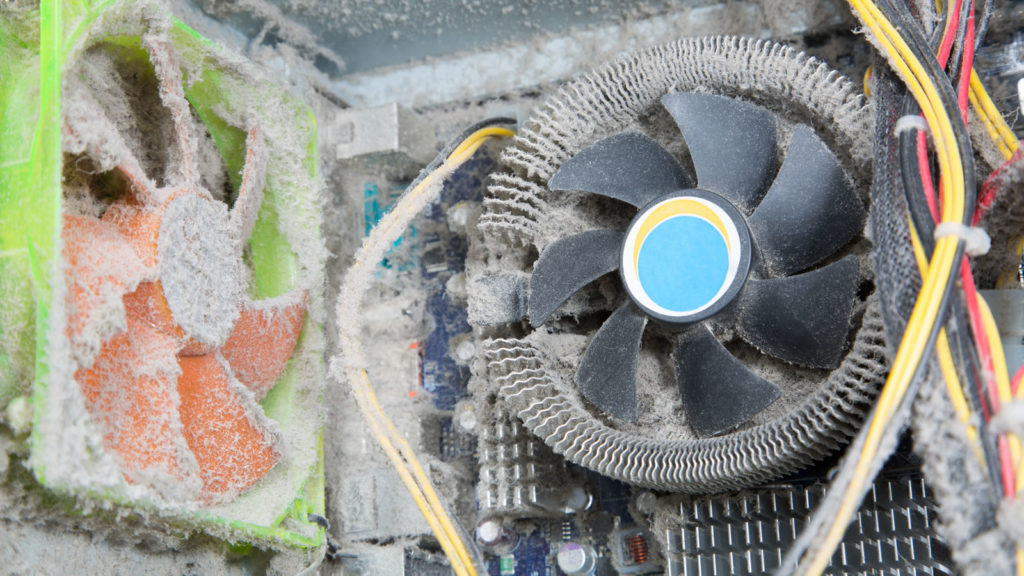
Tech Talk show notes for Tuesday, May 19, 2020. Listen live Tuesday mornings on WTCA FM 106.1 and AM 1050 in Plymouth, Indiana.
Airflow. It is one of the most important things to remember about your computer. Your password is essential, too, but if your computer is dead, you won’t have to worry about remembering your password.
Proper airflow is crucial because it helps keep the components inside of your computer nice and cool. Maybe not ice-cube cool (install a liquid-cooled system for that), but relatively cool to the touch. The problem comes when the components inside of your computer begin to overheat. While there are mechanisms inside the computer to prevent a meltdown, it can still suffer serious damage. It doesn’t matter if you have a laptop or a desktop; both types of systems are susceptible to heat damage.
So how do you keep cool air properly circulating in and around your computer? First of all, if you have a laptop, don’t put it on your lap. That’s right. Laptops often have vents on the bottom. If you cover up the vents on your machine, you effectively cut off the airflow. Cutting off the airflow can lead to overheating and unexcepted shutdowns. Also, don’t lay your laptop down on a soft surface like your bed or couch. This also blocks the airflow and can cause problems.
Desktops aren’t immune to airflow problems either. I can’t recall the number of times I’ve seen a desktop computer buried somewhere on someone’s desk, beside a desk, or on a shag carpet floor. Covering a computer with papers will prevent proper airflow. Treat your machine like you would treat a hot furnace – keep objects far away from it!
So far, we’ve talked about airflow around the computer. Now let’s talk about airflow inside the computer.
Some computers are just poorly engineered. They don’t have enough vents built into the case to assure proper airflow. There’s not much you can do about that if you have a laptop. But, if you’re building a custom PC or can afford to replace your desktop’s case, try choosing one that has tons of vents. Adding extra fans will help with airflow, but make sure you orient the fans so that the air is consistently flowing in the proper direction. Air should flow in one way and out another.
Again, there’s not much you can do about the airflow inside of a laptop. However, you can use something called a “chill mat” to help cool your portable PC. They can be purchased online or from one of the big box stores and are reasonably priced. You should be able to pick one up for around $20 and up. They come in all sorts of designs, but they all work the same – they keep the air flowing on the underside of your laptop.
Now there is something you can do to help keep your computer cool, whether you have a desktop or laptop, and that is to clear out all the dust and pet hair. Your computer is one of the most efficient filtering devices in your home or office. It pulls in tons of air and filters it using the resistors, capacitors, heatsinks, and chips inside. You should periodically clean your computer system, removing all of the dust, by disassembling it and blowing out the dust and debris.
If you’re thinking about blowing out your computer with a can of compressed air, good luck.
Whenever I blow out a computer, I use an air compressor. You don’t need a hundred pounds of air to get the job done, but it helps. Some of the computers I’ve seen have collected so much dust and dirt inside that I can spend upwards of a half-hour or more trying to get everything clean. That’s not an exaggeration. I’ve seen plenty of systems that have required me to scoop the dust from the computer. It would help if you never let your PC get that bad. Not only is it bad for the computer, but I witnessed one computer catch on fire. Now that’s bad!
Dust and debris inside of a machine steal your computer’s ability to cool itself properly. Airflow around critical components ceases, and they begin to overheat, which can lead to system failure.
Environmental conditions can also cause cooling problems. Every computer has an operating temperature, which ranges widely by manufacturer. The number, type, and use of components inside a computer can dictate how hot your machine can get before it has to shut down. But there are some very common-sense rules to follow:
- Don’t leave your laptop in a hot car.
- If you did leave your laptop in a hot car, don’t start it up until it has a chance to acclimate to its new environment. Be prepared, as this could take several hours.
- If your computer is in a hot environment, like a barn or shop without air conditioning, don’t use it on a scorching summer day.
- Please don’t set your computer by a window where the sun can beat down on it. Most PCs are black or dark in color and easily absorb the hot summer rays.
- If your computer keeps shutting down, stop trying to use it. The computer is telling you that it has a problem.
- If you suspect your computer has overheated without shutting down, stop using it.
